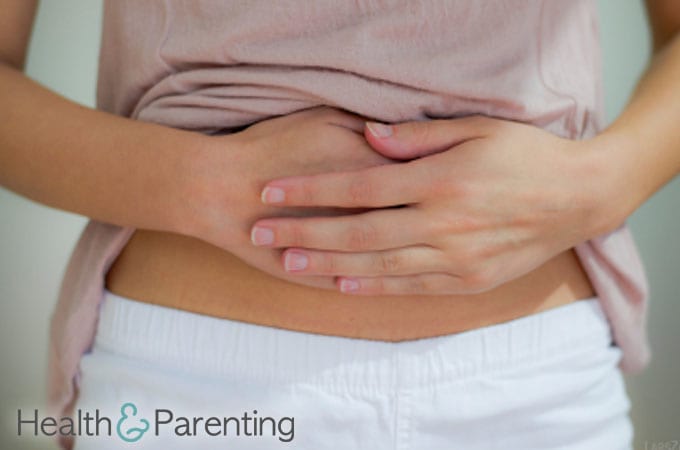You may not have heard the word lochia before, but it’s the name given to the vaginal discharge following childbirth. Lochia doesn’t just refer to the vaginal bleeding, it also incorporates the tissue and bacteria that you will pass. Lochia can last anywhere from two to six weeks.
What is lochia like?
The lochia will change colour overtime. It will probably be bright red at first, then brown, and perhaps light pink towards the end, but this is different for each woman. For the first few days, the lochia may have a metallic smell reminiscent of menstrual blood.
The discharge may be intermittent or an even flow. You may notice some clots – these come in all sizes, big and small, and are usually nothing to worry about. A couple of days after the birth, you should notice your discharge becoming lighter and less like menstrual blood. About a week later, the discharge will be white, or almost white, in colour. After this time, you may have lochia for a few weeks longer, but it will be a lighter discharge.
Breastfeeding causes the uterus to contract, and this can cause a heavier flow during or immediately after feeds. Oxytocin released during feeding causes the uterus to contract, which will speed healing, but can also increase bleeding temporarily. If you find these contractions uncomfortable, speak to your healthcare provider about safe pain medication to take while breastfeeding. You may notice an increased discharge in your sanitary pad, or upon standing up, directly after a feed.
If you have started taking progesterone-only birth control (such as the minipill or injection), you may experience spotting for another month.
What should I do?
There are a number of steps you can take to look after yourself while you experience lochia:
- use the right protection – while the flow is at its heaviest, use heavy duty sanitary pads or maternity pads. As the lochia lessens, you will be able to start using regular sanitary pads. Do not use tampons for the first six weeks after the birth, because they can increase your risk of infection.
- get as much rest as possible – easier said than done with a newborn in the house, but do try to take things easy. Overdoing it could lead to increased bleeding. Most healthcare providers suggest lifting nothing heavier than your baby until you are healed.
- take extra bathroom breaks – try to visit the bathroom regularly. Your bladder may be less sensitive in the days following the birth, so you may be less aware of when you need to wee. A full bladder can restrict your uterus and cause increased bleeding and pain.
When to seek help
For most women, lochia is a completely normal part of a healthy postpartum recovery. It can, however, provide warning signs for when something isn’t right. Contact your doctor immediately if:
- the discharge is still bright red when your baby is four days old
- after lightning, your lochia is now getting progressively heavier or turns red again
- you are bleeding excessively (soaking through a sanitary pad in an hour)
- you are passing clots bigger than a lemon
- you have a fever and/or chills
- your lochia has a foul odour
If you are feeling faint and suffering from excessive bleeding, seek immediate help.
Written by Fiona (@Fiona_Peacock), mother, writer and lover of all things baby related.
This information is not intended to replace the advice of a trained medical doctor. Health & Parenting Ltd disclaims any liability for the decisions you make based on this information, which is provided to you on a general information basis only and not as a substitute for personalized medical advice. All contents copyright © Health & Parenting Ltd 2017. All rights reserved.










